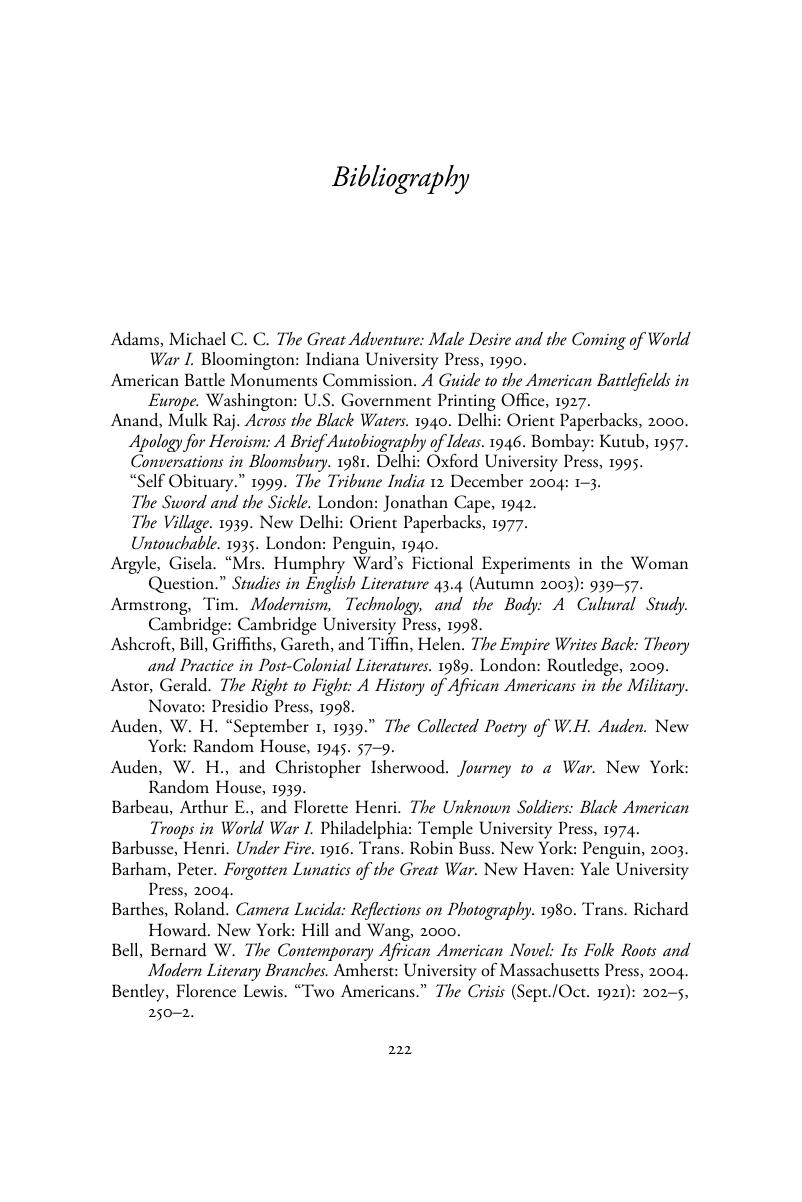Book contents
- Shell Shock, Memory, and the Novel in the Wake of World War I
- Shell Shock, Memory, and the Novel in the Wake of World War I
- Copyright page
- Dedication
- Contents
- Illustrations
- Book part
- Introduction Shell Shock and the World War I Novel
- Part I Invisible Wounds and Narrative Returns
- Part II Fractured Identities and Forgotten Histories
- Part III Troubling Men and Memorial Fictions
- Notes
- Bibliography
- Index
- References
Bibliography
Published online by Cambridge University Press: 05 September 2015
- Shell Shock, Memory, and the Novel in the Wake of World War I
- Shell Shock, Memory, and the Novel in the Wake of World War I
- Copyright page
- Dedication
- Contents
- Illustrations
- Book part
- Introduction Shell Shock and the World War I Novel
- Part I Invisible Wounds and Narrative Returns
- Part II Fractured Identities and Forgotten Histories
- Part III Troubling Men and Memorial Fictions
- Notes
- Bibliography
- Index
- References
Summary

- Type
- Chapter
- Information
- Shell Shock, Memory, and the Novel in the Wake of World War I , pp. 222 - 240Publisher: Cambridge University PressPrint publication year: 2015



